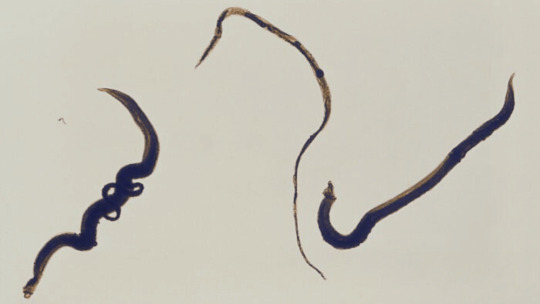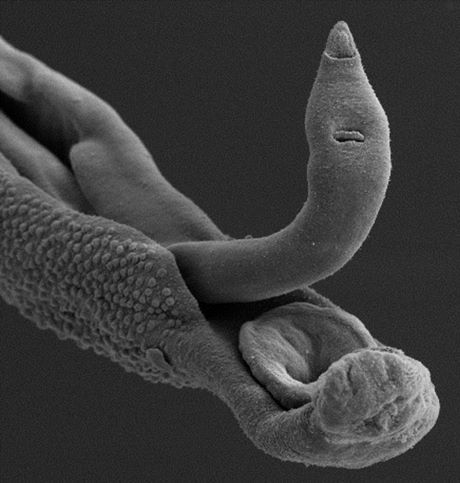#butantan
Text

Snake in the Instituto Butantan Biological research centre in São Paulo, Brazil
Brazilian vintage postcard
#historic#biological#photography#vintage#sepia#photo#briefkaart#the instituto butantan biological#centre#brazilian#snake#brazil#butantan#ansichtskarte#postcard#são paulo#instituto#postkarte#postkaart#research#carte postale#ephemera#paulo#postal#tarjeta
23 notes
·
View notes
Text
Estudantes Brasileiros Capacitados no Butantan Conquistam Medalhas na Olimpíada Iberoamericana de Biologia
Da esquerda para a direita: David Li Chiun Liu, medalhista de prata; Marcos Paulo Gonçalves Santos, medalhista de ouro; Pedro Perry Resende, prata e Arthur Kui, ouro.
A educação científica no Brasil sempre teve desafios enormes, mas, felizmente, algumas iniciativas estão mudando esse panorama, e o Instituto Butantan é uma peça chave nesse processo. No último dia 13, quatro jovens brasileiros…
0 notes
Text
Chance de uma nova pandemia é muito alta, diz diretor do Butantan
A possibilidade de o Brasil enfrentar novas pandemias no futuro próximo é consideravelmente alta, e é crucial estarmos que as autoridades estejam preparadas para lidar com essa realidade. Essa é a advertência de Esper Kallás, diretor do Instituto Butantan, proferida durante a 2ª Conferência FAPESP 2023, sob o tema principal foi “Vírus, pandemia e vacinas”.
Em tom politizado, com uso expressões…

View On WordPress
0 notes
Text
Instituto recruta voluntários para teste de vacina contra chikungunya
Instituto recruta voluntários para teste de vacina contra chikungunya
Voluntários devem ser adolescentes de 12 a 17 anos de idade
O Instituto de Infectologia Emílio Ribas, na capital paulista, esta recrutando voluntários adolescentes, de 12 a 17 anos de idade, para participar dos testes da primeira vacina contra a chikungunya. O imunizante já se provou seguro e eficiente em pesquisa realizada nos Estados Unidos com 4.115 adultos, e agora está em fase final de…

View On WordPress
0 notes
Text
The greatest Dengue epidemic in Brazil: Surveillance, Prevention, and Control

In this review, we discuss dengue surveillance, prevention, and control measures in Brazil. Data on dengue epidemics between 2000 and 2024 indicates an increase in the number of dengue cases and deaths. Global climate change is a key driver of this growth. Over the past 25 years, nearly 18 million Brazilians have been infected with the dengue virus, and the highest number of dengue cases in Brazil's history is projected to reach 2024. Dengue mortality in Brazil increased geographically over time. As of June, there were approximately 6 million probable cases and 4,000 confirmed deaths in Brazil, which represents the greatest dengue epidemic to date. Several technologies have been developed to control Aedes aegypti, including the deployment of Wolbachia-infected mosquitoes, indoor residual spraying, sterile insect techniques, and mosquito-disseminated insecticides. The Ministry of Health recommends integrating these technologies into health services. Brazil is the first country to incorporate the Takeda vaccine into its public health system, and the Butantan vaccine is currently undergoing Phase 3 clinical trials. Increasing the vaccination coverage and implementing novel Ae. aegypti control technologies could reduce the number of dengue cases in Brazil in the coming years. Community activities such as home cleaning and elimination of potential mosquito breeding sites, facilitated by social media and health education initiatives, must continue to achieve this reduction. Ultimately, a multisectoral approach encompassing sanitary improvements, mosquito control, vaccination, and community mobilization is crucial in the fight against dengue epidemics.
Read the paper.
#brazil#politics#science#climate change#environmentalism#environmental justice#dengue#epidemiology#brazilian politics#image description in alt#mod nise da silveira
8 notes
·
View notes
Text

identidade visual antiga do museu do instituto butantan
são paulo, 2003
status: o museu ainda existe, mas não com essa identidade visual
acervo pessoal
3 notes
·
View notes
Text
Innovative molecular biology technique allows for discovery of novel targets for candidate vaccines against schistosomiasis

- By Luciana Constantino , Agência FAPESP -
Researchers in Brazil have used an innovative technique in molecular biology to identify targets for candidate vaccines against Schistosoma mansoni, the parasite that causes schistosomiasis.
Considered one of the world’s 17 neglected tropical diseases (NTDs), schistosomiasis affects some 200 million people in 74 countries, according to the World Health Organization (WHO). Six million are estimated to be infected in Brazil, mainly in the Northeast region and Minas Gerais state.
The scientists used phage display, the study of protein interactions using bacteriophages, viruses that infect bacteria, to screen 99.6% of 119,747 DNA sequences encoding the proteins known to be expressed across all life-cycle stages of the parasite, achieving comprehensive coverage of its proteome.
The results of the study are reported in an article in NPJ Vaccines, an open-access journal published by the Springer Nature group.
They follow on from those of a previous study that revealed the mechanism whereby the Rhesus macaque Macaca mulatta naturally develops a lasting immune response against schistosomiasis by inhibiting certain of the parasite’s genes so that it cannot multiply in the host organism. This immune response leads to self-cure after first contact with S. mansoni and enables the animal to react faster to a second infection (read more at: agencia.fapesp.br/37688).
“Phage display had never been deployed for this purpose in research on parasitic diseases, which normally involves preselection of a few targets for testing of candidate vaccines. In this study, we screened 12,000 proteins of S. mansoni at the same time to identify which ones were targeted by the macaque’s antibodies, both after initial infection and reinfection and after reinfection and self-cure, a key innovation. Both the technique and the model for the study were innovative,” said Murilo Sena Amaral, a researcher at Butantan Institute’s Laboratory of Cell Cycle.
Amaral is the penultimate author of the article. The last author, as principal investigator for the study, is Sergio Verjovski-Almeida, also a researcher at Butantan Institute and a professor at the University of São Paulo’s Institute of Chemistry (IQ-USP).
Both are supported by FAPESP (15/06366-2 and 20/01917-9), which has also funded scholarships for other researchers in the group (18/18117-5, 19/02305-0 and 16/10046-6), including a PhD scholarship for first author Daisy Woellner Santos.
Methodology
The researchers investigated the immune response of ten macaques infected by S. mansoni during the stages of self-cure and resistance to reinfection using a recently developed technique called peptide library-based phage immunoprecipitation sequencing (PhIP-Seq). They constructed a phage display library that comprised 119,747 DNA sequences encoding 11,641 known proteins from S. mansoni in all stages of its life cycle. The library was incubated with antibodies collected from rhesus macaques in a previous study at different points during the process of self-cure and resistance to reinfection. The aim was to isolate and identify specific targets of the animal’s immune response to the parasite.

The study involved rhesus macaques, which naturally develop a lasting immune response to the disease (photo: researcher’s archive)
Library screening with antibodies from the early phase of parasite infection identified significantly enriched epitopes of parasite extracellular proteins known to be expressed in the host’s digestive tract, shifting toward intracellular proteins during the late phase of parasite clearance (released owing to its death). Epitope refers to the specific target against which an individual antibody binds. When an antibody binds to a protein, it bonds not to the entire protein but to a segment known as an epitope.
The enriched peptides were analyzed with bioinformatics tools to identify potential candidates for vaccines. The most promising candidates were tested in a pilot vaccination assay, in which mice were immunized with a selected pool of PhIP-Seq-enriched phage-displayed peptides. The result was a significant reduction of worm burden in the immunized mice.
“You often hear the argument that a schistosomiasis vaccine isn’t feasible, but our discoveries have revealed a great deal of the immune response and opened up promising prospects for the development of an effective vaccine. We worked with the 12,000 proteins key to all stages of the parasite’s life cycle and succeeded in identifying the most reactive targets,” Verjovski-Almeida told Agência FAPESP. The technique can be used for other types of parasite, he added.
In an article published in May 2023, the group described their discovery of a way to “separate” male and female parasites so as to prevent reproduction and egg release. Male-female pairing, with the female living inside the male, is essential to their survival. Without it, they die. In the study, the researchers showed that male-female separation could be obtained by silencing specific long noncoding RNAs (lncRNAs), which are therefore a promising target for treatment of the disease (read more at: agencia.fapesp.br/41908).

Female inside male of Schistosoma mansoni (photo: researcher’s archive)
How the worm works
Schistosomiasis is a parasitic disease associated with poor hygiene and a lack of basic sanitation. It is transmitted when an infected person excretes feces containing schistosome eggs into the environment. The eggs hatch in freshwater, releasing larvae that infect snails. The snails are intermediate hosts, while humans are definitive hosts.
After four weeks, the larvae leave the snail as cercariae, the free-swimming larval stage. When humans come into contact with contaminated water, they acquire the disease via active skin penetration by cercariae.
In the human bloodstream, the cercariae progress to the schistosomule stage, eventually becoming adult worms that lodge in the veins of the intestines. The first symptoms of the disease appear two to six weeks after infection.
The disease is diagnosed by laboratory analysis of feces. Simple cases can be treated by a single dose of praziquantel, a drug discovered in the 1970s and distributed in Brazil by the national health system (Sistema Único de Saúde, SUS). However, it does not assure continuous protection. Patients taking it can be reinfected, and there are reports of parasite drug resistance.
“The next step is to develop a suitable vaccine formulation containing adjuvants and a novel mechanism for delivery of these antigens so that they produce better protection in the host. We have some targets with higher response levels,” Verjovski-Amaral explained. Butantan Institute has applied for a patent on the group’s discoveries linked to possible vaccine targets.
Oswaldo Cruz Foundation (FIOCRUZ), an arm of the Brazilian Health Ministry, has been working for years on what could be the world’s first schistosomiasis vaccine. Called Schistovac, it is in the testing stage and contains a modified version of the Sm14 protein found in S. mansoni. The protein normally plays a key role in trafficking fatty acids, which are essential to the parasite’s cellular functions. The modified version is designed to prevent proliferation.
The article “Schistosoma mansoni vaccine candidates identified by unbiased phage display screening in self-cured rhesus macaques” is at: www.nature.com/articles/s41541-023-00803-x.
This text was originally published by FAPESP Agency according to Creative Commons license CC-BY-NC-ND. Read the original here.
--
Header image: This micrograph reveals four Schistosoma mansoni trematodes, a pair (left), a female (center), and a male (right). Credit: CDC/Wikimedia Commons. Ed note: A slight blue filter has been applied.
Read Also
Test detects co-infection by novel species of parasite in severe cases of visceral leishmaniasis
2 notes
·
View notes
Photo

"PT Brasil #Vote13@ptbrasil1 hO BOLSONARISMO NÃO LIGA PARA O POVO!"Os bloqueios estimulados por Bolsonaro levam transtorno à vida das pessoas, dificultam a chegada de pacientes a hospitais, abastecimento de produtos e prejudicam até mesmo a produção de vacinas, segundo o Instituto Butantan."
3 notes
·
View notes
Text
Butantan esclarece: medicamentos biossimilares são seguros e eficazes para tratar diversas doenças

View On WordPress
0 notes
Text

Snake garden in the Instituto Butantan biological research centre in São Paulo, Brazil
Brazilian vintage postcard
#historic#briefkaart#postkaart#são paulo#carte postale#instituto#ephemera#biological#instituto butantan#centre#tarjeta#photo#postcard#postal#brazilian#butantan#snake#postkarte#paulo#brazil#ansichtskarte#research#sepia#garden#photography#vintage
6 notes
·
View notes
Text
Vacina do Butantan contra chikungunya tem 100% de eficácia em adolescentes de 12 a 17 anos
A vacina contra a chikungunya desenvolvida pelo Instituto Butantan apresentou 100% de eficácia em adolescentes de 12 a 17 anos que já tinham sido infectados pelo vírus antes de receber o imunizante. Em pessoas que não foram expostas à doença, a eficácia foi de 99,1%. Os resultados da pesquisa foram publicados na quarta-feira (4) no periódico científico The Lancet Infectious Diseases.
Leia mais…
1 note
·
View note
Text
Saúde vê esperança em vacina do Butantan, mas não acredita em expansão da vacinação contra dengue antes de 2026
Em conversa com jornalistas, Nísia Trindade comentou sobre as tratativas para aumentar a produção da vacina contra dengue no país e de outros temas como Mpox, coqueluche e cortes de gastos A ministra da Saúde, Nísia Trindade, informou nesta quarta-feira (28) que o laboratório japonês Takeda, que produz as vacinas contra a dengue, ainda não tem condições para iniciar o processo de transferência da…

View On WordPress
0 notes
Text
#anosatrás #lembranças #memories #memorias #recordar #butantan #Butantã #blues
0 notes
Text
Covid: vacina do Butantan não atinge resultado esperado e pesquisa é encerrada
O Instituto Butantan decidiu descontinuar a produção da ButanVac, candidata à vacina contra a covid-19. Segundo o órgão, o resultado “ficou aquém dos pré-requisitos de sucesso estabelecidos”.
Os testes com o produto já estavam na fase 2, quando 200 voluntários receberam a ButanVac e outros 200 foram imunizados pelas vacinas já disponíveis no Sistema Único de Saúde (SUS).
Conforme a nota divulgada…
0 notes
Text
Butanvac falha em testes, e desenvolvimento é suspenso
Foto: Butantan
A Butanvac, candidata à vacina contra Covid-19 desenvolvida pelo Instituto Butantan, não atingiu o resultado esperado no estudo de fase 2. Com isso, o instituto vai suspender os estudos com a vacina.
Em nota, o Butantan disse que a Butanvac dobrou a quantidade de anticorpos contra a doença após 28 dias de sua aplicação. A meta esperada era que induzisse uma produção de anticorpos…

View On WordPress
0 notes
Text
Single-dose Brazilian dengue vaccine hits almost 80% efficacy

A dengue vaccine being developed by the Butantan Institute, a major research facility owned by the São Paulo state government and the largest vaccine manufacturer in Latin America, had an efficacy of 79.6 percent in clinical trials, according to results published Thursday in The New England Journal of Medicine.
Butantan conducted a three-year clinical trial involving 16,235 people between the ages of 2 and 59, including participants who received the vaccine candidate and a placebo. The study is still ongoing.
The news was welcomed in Brazil because Butantan’s vaccine candidate, called Butantan-DV, is administered in a single dose, unlike Qdenga, the immunizer manufactured by Japan’s Takeda which will be used in a vaccination campaign starting next week. Qdenga uses a two-dose regimen, with a three-month interval between shots.
In a statement, Butantan said the single-dose regimen is advantageous, “especially during epidemics, because it protects the population in a short period of time, helps achieve greater vaccination coverage and has logistical and economic benefits.”
Continue reading.
#brazil#brazilian politics#politics#dengue#science#healthcare#vaccination#mod nise da silveira#image description in alt
15 notes
·
View notes